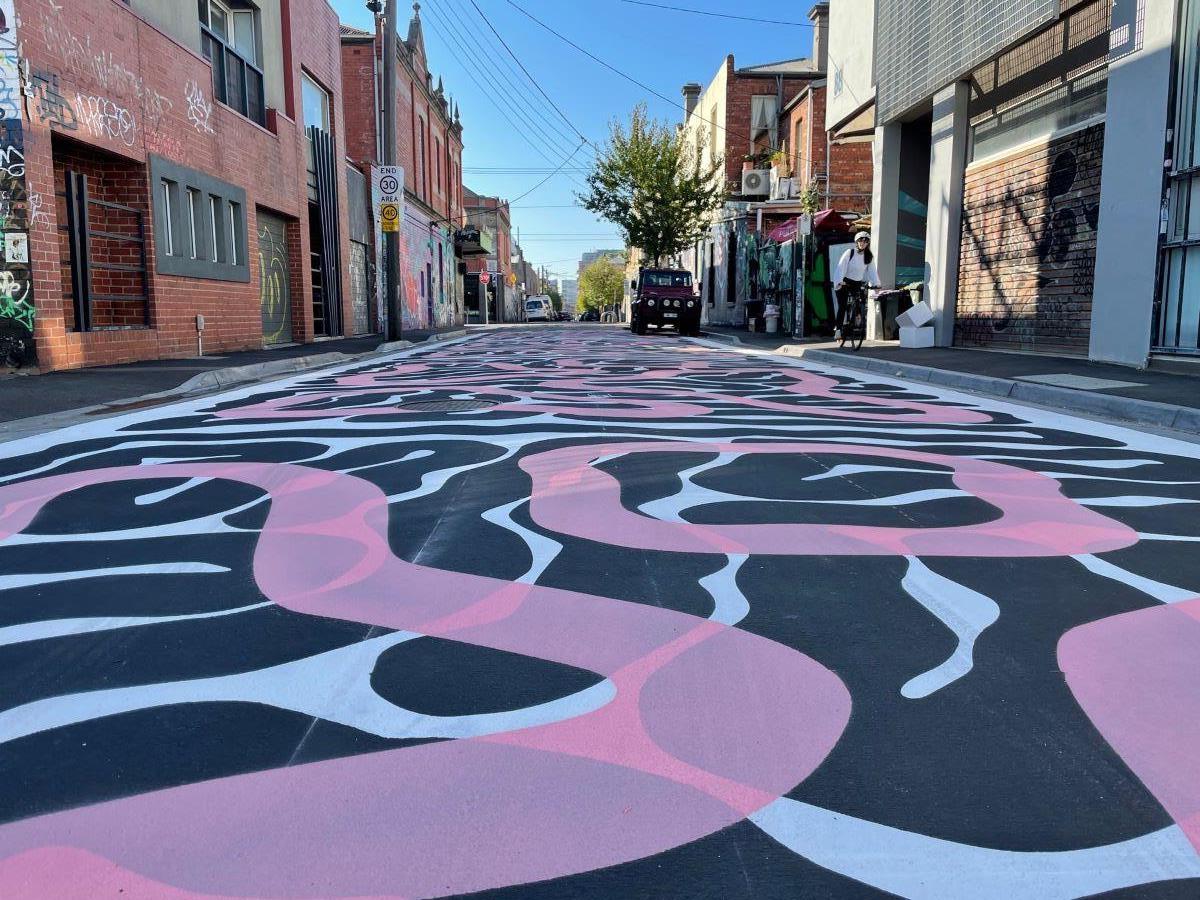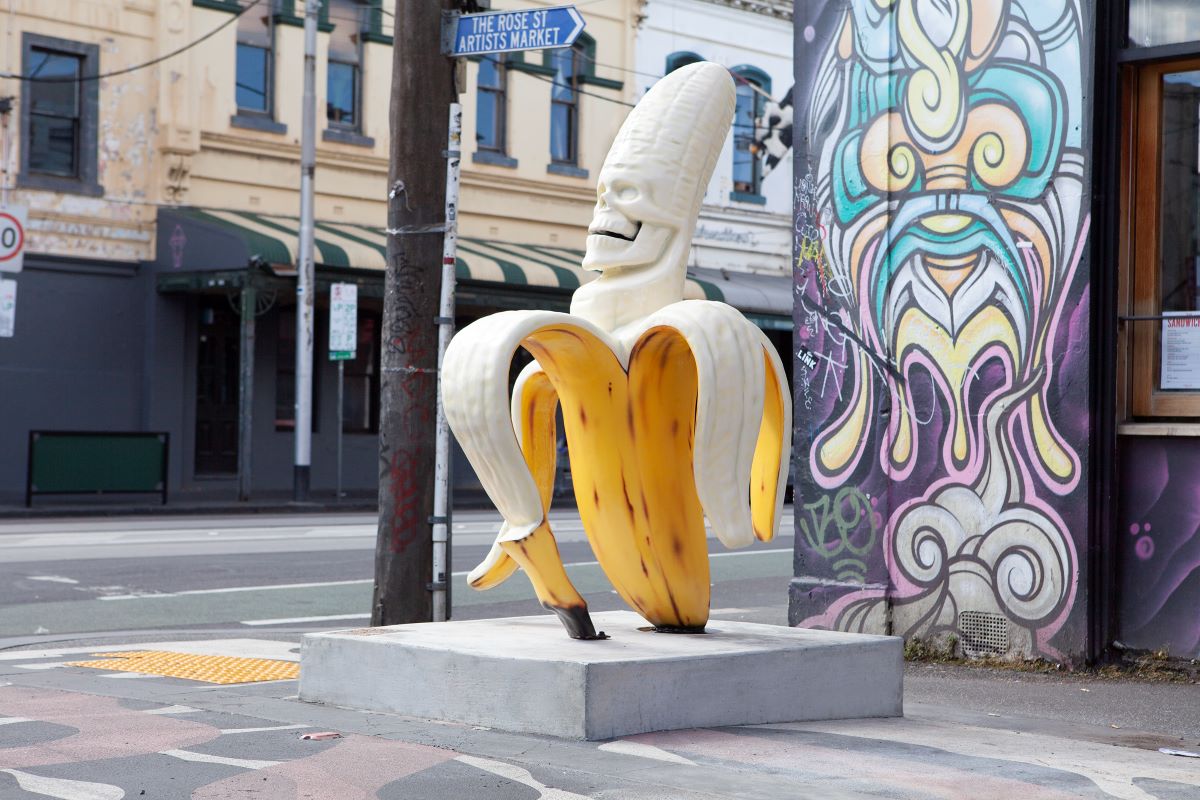Rose Street Public Art
Thursday 11 November 2021
We have made some exciting changes along Rose Street in Fitzroy to make the road more pedestrian friendly and improve access to the Rose Street Market and other businesses on the street.
Our Traffic Engineering team designed and secured $100,000 grant from the Transport Accident Commission for this project.
The street has become a shared zone, with a speed limit of 10km an hour, between Brunswick Street and Spring Street. The road was also resurfaced using recycled asphalt.
Other improvements to the street include the installation of new public seating, planters growing native species, more bicycle hoops and a bike pumping station.
Further to this, Council commissioned two new major public artworks for the street. A stunning road mural by Gumbaynggirr and Bundjalung artist Otis Hope Carey entitled Giirrwaa, and a sculpture by local artist Adam Stone, Fallen Fruit.
Next time you're in Fitzroy, check out Rose Street to see the exciting changes.

Giirrwaa by Otis Hope Carey
The word Giirrwaa translates roughly to ‘community’ in the language of the Gumaynggirr people. Through his aptly titled artwork, Otis Hope Carey grants his audience access to a personal narrative which details journeys and experiences derived from his life.
Giirrwaa reflects the 1960s Op Art movement, championed by artists such as Bridget Riley and Victor Vasarely, and also draws on the inherent influence of the traditional style and techniques of Hope Carey’s Gumbaynggirr community. A series of metaphoric topographies trace fluid paths across the artwork to manifest the feelings and awareness of the bonds they share with one another within the community. The contour lines and movement create a powerful viewing experience that marries visual immediacy with the spiritual and conceptual nature of Otis Hope Carey’s contemporary art practice.

Image: Adam Stone ' Fallen Fruit' 2021. Photo: Adam Stone.
Fallen Fruit by Adam Stone
Fallen Fruit by Adam Stone uses iconography, symbolism and narrative to address a major theme in his practice, that permeates every aspect contemporary society─hubris.
The sculpture directly references the 1970s phenomenon of oversized, kitsch roadside objects - the big banana, pavlova, koala, submarine, merino - constructed to seduce travellers and passersby to stop for a photo opportunity and increase tourism and revenue in regional highway towns.
Fallen Fruit seeks to both engage with and subvert this tradition. The work does this by employing the symbol of the banana, anthropomorphised through the inclusion of a human skull, a memento mori to meditate on our Western tendencies towards unsustainable desires and excess. Using absurdity and humour as an entry point, this oversized pop object reveals the ‘infallibility’ of the super-human figure as social myth.
This work seeks to engage with the ancient tradition of public art serving as a medium to tell stories, communicate beliefs and provide warnings. In contrast in contemporary society, public statues are largely monumental and commemorative.
The sculpture also engages with Banana Art, a lowbrow internet subculture where practitioners work against the temporary nature of the material and document their efforts online. Here, the large sculpture, weighted by art history as well as its sheer physicality, stands in contrast to ephemeral banana carving. The work therefore acts as an absurd warning about our human compulsion towards an excessive drive (as in the myth of Icarus) that reinforces the danger of hubris. The final work is a simulacra pastiche of art-historical milieu with a post-internet nod.
By revisiting and subverting this tradition of oversized sculpture, the artist hopes that Fallen Fruit can become a welcome spectacle for tourists and locals as well as an invitation to reflect on our human tendencies towards unsustainable excess, a warning for the future.
